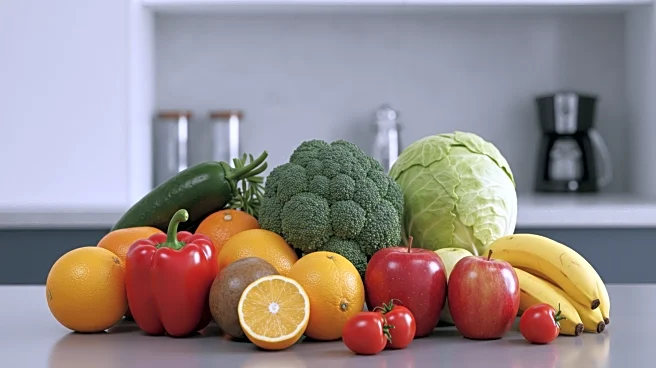Rapid Read • 8 min read
Circana, a market research firm, has released projections for the food and beverage industry in 2026, indicating a volume growth range of -1% to 1% and dollar sales growth between 3% to 5%. The firm highlights several key trends influencing the industry, including a focus on value, health, and demographic shifts. Consumers are increasingly prioritizing high-protein diets, reducing alcohol consumption, and consuming fewer snacks. Additionally, the rising prices of cocoa and coffee are contributing to retail price growth. Circana notes that consumers are redefining 'value' with an emphasis on convenience and functionality, which is impacting volume growth and sales. The firm also points out that tighter budgets among low-income and Hispanic households, along with demographic changes such as declining birth rates and slower immigration trends, are affecting broader category performance.
AD
The projections by Circana underscore significant shifts in consumer behavior that are likely to impact the food and beverage industry. As consumers prioritize health and value, companies within the industry may need to adapt their strategies to meet these evolving demands. The emphasis on high-protein diets and reduced alcohol consumption reflects a broader trend towards health-conscious living, which could influence product offerings and marketing strategies. Additionally, the impact of rising cocoa and coffee prices on retail prices highlights the ongoing cost pressures faced by the industry. These trends could lead to increased competition among retailers and manufacturers as they strive to offer value while maintaining profitability. The demographic shifts noted by Circana may also have long-term implications for market dynamics and consumer preferences.
As the food and beverage industry navigates these trends, companies may focus on strategic promotional activities and competitive pricing to stimulate demand. The emphasis on convenience and functionality suggests potential growth opportunities for products that align with these consumer priorities. Retailers and manufacturers might also explore ways to cater to the needs of low-income and Hispanic households, potentially through targeted marketing and product development. The industry could see further consolidation as companies seek to manage cost pressures and adapt to changing consumer behaviors. Monitoring these trends will be crucial for stakeholders aiming to remain competitive and profitable in the evolving market landscape.
AD
More Stories You Might Enjoy










